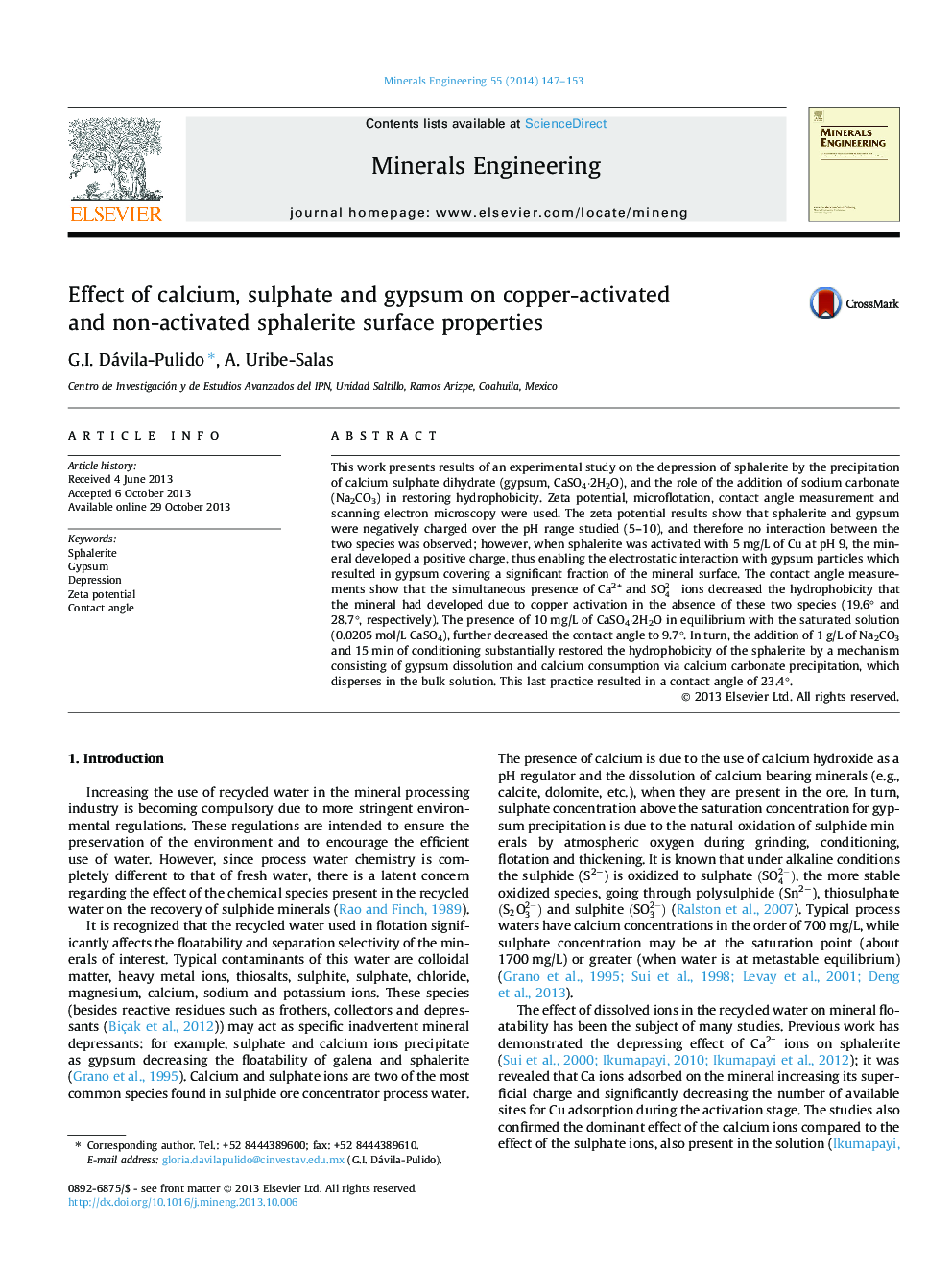| کد مقاله | کد نشریه | سال انتشار | مقاله انگلیسی | نسخه تمام متن |
|---|---|---|---|---|
| 233312 | 465333 | 2014 | 7 صفحه PDF | دانلود رایگان |
• Copper-activated sphalerite heterocoagulates with gypsum.
• Gypsum spontaneously adheres onto activated sphalerite reducing its hydrophobicity.
• Sodium carbonate dissolves gypsum preventing sphalerite depression.
• Sodium carbonate should be added before copper activation stage.
• Gypsum dissolution is favored by increasing sodium carbonate added and conditioning time.
This work presents results of an experimental study on the depression of sphalerite by the precipitation of calcium sulphate dihydrate (gypsum, CaSO4·2H2O), and the role of the addition of sodium carbonate (Na2CO3) in restoring hydrophobicity. Zeta potential, microflotation, contact angle measurement and scanning electron microscopy were used. The zeta potential results show that sphalerite and gypsum were negatively charged over the pH range studied (5–10), and therefore no interaction between the two species was observed; however, when sphalerite was activated with 5 mg/L of Cu at pH 9, the mineral developed a positive charge, thus enabling the electrostatic interaction with gypsum particles which resulted in gypsum covering a significant fraction of the mineral surface. The contact angle measurements show that the simultaneous presence of Ca2+ and SO42- ions decreased the hydrophobicity that the mineral had developed due to copper activation in the absence of these two species (19.6° and 28.7°, respectively). The presence of 10 mg/L of CaSO4·2H2O in equilibrium with the saturated solution (0.0205 mol/L CaSO4), further decreased the contact angle to 9.7°. In turn, the addition of 1 g/L of Na2CO3 and 15 min of conditioning substantially restored the hydrophobicity of the sphalerite by a mechanism consisting of gypsum dissolution and calcium consumption via calcium carbonate precipitation, which disperses in the bulk solution. This last practice resulted in a contact angle of 23.4°.
Journal: Minerals Engineering - Volume 55, January 2014, Pages 147–153
